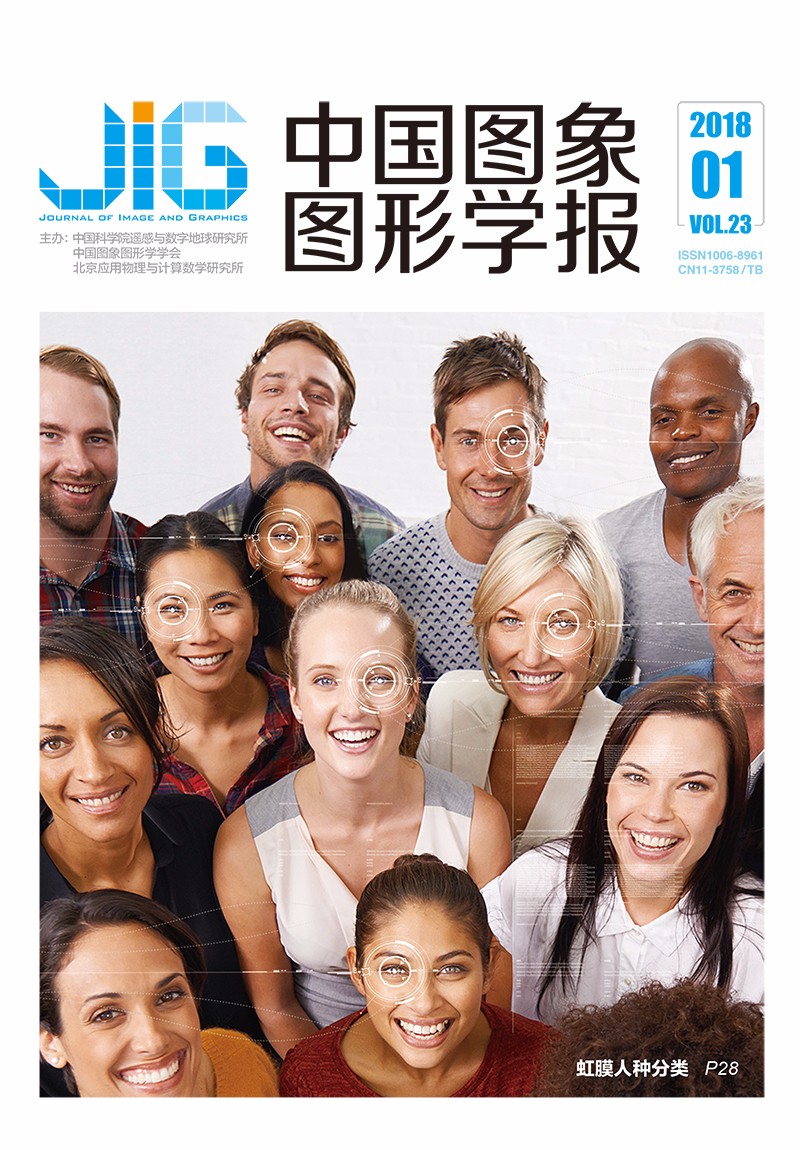
3D-HEVC深度图帧内预测快速算法
摘 要
目的 多视点纹理加深度视频(MVD)格式逐渐成为立体视频的主流表现形式之一。新一代高效率立体视频编码(3D-HEVC)继承了HEVC的编码结构并引入一些新的编码技术,导致深度图帧内编码过程具有较高的计算复杂度。针对这一问题,提出了一种深度图帧内编码快速算法。方法 本文算法利用深度图的特征分别对CU分割过程和粗略模式选择(RMD)过程进行优化。首先在四叉树编码结构上,利用基于纹理元的图像分析方法计算编码单元的梯度矩阵,若梯度矩阵中的梯度值之和小于给定的阈值,则终止该CU的分割进程。同时,对大尺寸的PU和小尺寸的PU分别利用纹理特征与粗略模式选择过程中Planar和DC进行低复杂度率失真计算后的最小率失真代价,跳过RMD中角度模式的检查过程。结果 实验结果表明,与原始算法相比,本文算法平均节省40.64%的深度图编码时间,而合成视点的平均比特率仅仅增加了0.17%。本文算法不仅能对平坦的CU跳过不必要的深度决策过程,而且有效地减少了RMD中需要遍历的模式数目,提高了编码器的效率。结论 该算法对CU分割进程和粗略模式选择过程都进行优化,在合成视点的视频质量几乎不变的前提下,有效降低了深度图的帧内编码复杂度。
关键词
Fast intra prediction algorithm for depth maps in 3D-HEVC
Wang Chi, Feng Gui, Cai Chunting, Han Xue(Huaqiao University, Department of Information Science and Engineering, Xiamen 361021, China) Abstract
Objective The multi-view video plus depth (MVD) format is gradually becoming one of the main representations for 3D videos. The 3D high-efficiency video coding (3D-HEVC) is the latest coding standard for compressing the MVD format. The 3D-HEVC inherits the coding structure of HEVC. Consequently, the splitting process of coding units (CUs) and the intra mode search process in depth map intra coding have great computational complexity. New techniques for depth map intra coding, such as depth modeling mode and simplified depth coding, have been introduced in recent years to preserve the sharp edges of depth maps. These techniques play an important role in the coding of depth maps. However, the adoption of these techniques further increases the computational complexity in 3D-HEVC encoder. A fast algorithm for depth map intra coding is proposed in this study to reduce the computational complexity of depth map intra coding. Method There are a lot of large smooth regions which are separated by sharp edges in depth maps. The CU splitting process and the rough mode decision (RMD) process are improved by the proposed algorithm by using the unique characteristics of depth maps. An algorithm based on the concept of texture primitive is proposed for the hierarchical quad-tree coding structure to early terminate the CU splitting process. First, the gradient matrix of the current CU can be calculated by using the texture analysis algorithm based on texture primitive. On the basis of statistical analysis, a strong correlation between the optimal size and sum of gradient values in gradient matrix is considered for each CU. If the sum of gradient values in gradient matrix is small, then the optimal size of current CU will be large. By contrast, if the sum of gradient values in gradient matrix is large, then the optimal size of current CU will be small. Therefore, if the sum of gradient values in gradient matrix is smaller than a given threshold, then the CU splitting process should be terminated. For the RMD process, the texture features and the smallest LCRDcost of Planar and DC are used to skip the search of angular modes in RMD for prediction units (PUs) of large size and PUs of small size, respectively. Planar and DC are two intra prediction modes that are highly suited to code smooth PUs. If the texture of current PU is flat, then Planar or DC is likely to be selected as the optimal mode. Hence, for PUs of large size, if the sum of the gradient values in the gradient matrix is zero, then only Planar and DC are added to the full-RD search list, and the RMD process is skipped. When the size of PUs is small, if the smallest LCRDcost of Planar and DC is smaller than a given threshold, then the RMD process is terminated immediately and the search of angular modes in RMD is skipped. Result In the proposed approach, the unnecessary depth levels of smooth CUs can be skipped, and the number of intra mode candidates for RMD is effectively reduced. The reference software HTM 13.0 of the 3D-HEVC standard is used to verify the coding performance of the proposed algorithm. Eight JCT-3V specified test sequences with two resolutions of 1 024×768 and 1 920×1088 are tested. The quantization parameter (QP) values for texture are 25, 30, 35, and 40, and the QP values for depth maps are 34, 39, 42, and 45. Experimental results show that compared with HTM 13.0, the proposed algorithm achieves an average depth map coding time reduction of 40.64% with a small bitrate loss of 0.17% for synthesized views under all intra scenario. For the eight test sequences, the coding time reduction of depth maps ranges from 34.77% to 51.42%, which indicates that the proposed algorithm can effectively improve encoder efficiency and has a general validity. In particular, the time saving of Poznan_Hall2 is over 50%, which is considerably larger than that of other sequences. This result is due to the fact that the depth maps of Poznan_Hall2 contain lesser edges and have a larger proportion of flat regions. The proposed algorithm also has advantages compared with other existing algorithms. A subjective quality comparison of synthesized views for Balloons (1 024×768) sequence and Poznan_Hall2 (1 920×1 088) sequence is presented to further evaluate the performance of the proposed algorithm. The results indicate that the quality of decoded synthesized views generated by the proposed algorithm is almost the same as the quality of those generated by the original HTM-13.0. The proposed algorithm can preferably preserve the edge information of depth maps. Conclusion The proposed algorithm not only accelerates quad-tree decision but also optimizes the RMD process. The algorithm periodically updates thresholds on the basis of temporal correlation of video sequences to ensure a good video quality of synthesized views. Subjective and objective evaluations show that the proposed algorithm can significantly reduce the computational complexity of depth map intra coding without decreasing the quality of synthesized views. The proposed algorithm also has practical values and can be applied to actual situations. Nonetheless, the proposed algorithm can be further improved. The algorithm optimizes the recursive splitting process of smooth CUs; however, the splitting process of CUs with a complex texture still has high computational complexity. Therefore, effective and efficient ways for reducing the depth levels of CUs with a complex texture will be studied in future research.
Keywords
|



 中国图象图形学报 │ 京ICP备05080539号-4 │ 本系统由
中国图象图形学报 │ 京ICP备05080539号-4 │ 本系统由